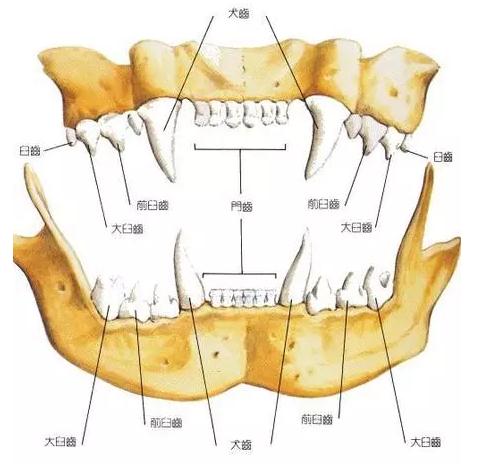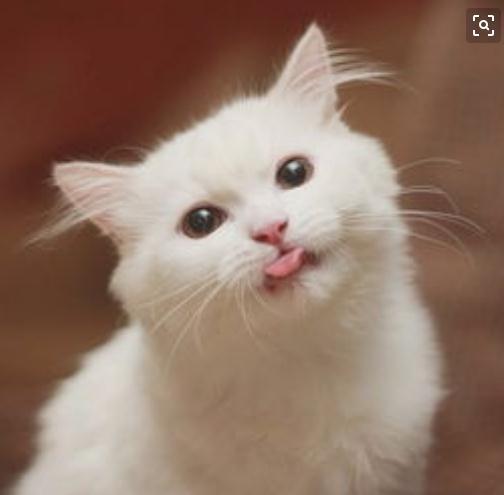Cats, like humans, also need to change from deciduous teeth to permanent teeth. Because the cat’s life cycle is shorter than humans, it has changed its teeth from 5 months.The development of cat teeth should go through two stages of milk teeth and permanent teeth. In the first stage, the cat had 26 teeth, and the cat had 30 teeth in the second stage.

The growth and development of cat teeth are divided into two stages, namely the stage of milk tooth and permanent tooth.
During the milk tooth stage, 26 teeth, that is, 6 milk cut teeth, 2 milk canine teeth, 6 cream anterior molars; 6 breasts of the lower jaw, 2 milk canine teeth, and 4 milk anterior molars.
There are 30 teeth in the permanent teeth stage, namely 6 upper jaws, 2 canine teeth, 6 front molars, 2 molars; 6 canine teeth, 4 front molars, 2 molar.
Cat’s teeth growth and teeth are very regular, and they can often be used as the basis for the age of the cat.
The first milk cuts the teeth for 2-3 weeks.
The second milk cuts the teeth of 3-4 weeks.
Third milk cuts 3-4 weeks long out
The first tooth grows 3.5-4 months (tooth change)
The second tooth is 3.5-4 months old (tooth change)
Third tooth cut 4-4.5 months grows
3-4 weeks of breast tooth
The canine teeth grow 5 months (tooth change)
The first molars of the first milk (there are upper jaws, no lower jaws) grow
The second milk ahead is 4-6 months growing
The third milk molar grows 4-6 months
The first front molar is 4.5-5 months growing
The second front molars grow in 5-6 months
The third front molars grow in 5-6 months
The first molar grows 4-5 months
1. Health care of teeth
Pets’ tooth problems are mainly gum disease and broken teeth.Cats rarely have tooth decay, because its teeth are corn shape, and saliva is not acidic, and the content of carbohydrates in cat food is quite low, so cats rarely have tooth decay.Please note: If the cat uses sweets as a snack, tooth decay may occur.
Frequent brushing and then eating and regular to the veterinary hospital can make cats keep healthy and shiny teeth.Choose proper chewed toys for cats can avoid them from biting inappropriate things and cause teeth to break.
Once a cat suffers from periodontal disease, the bones around the gums, the bones around the teeth, and the connective tissue are affected, which may cause the teeth to fall off.The problem of cat teeth usually first appears tooth spots -that is, soft, transparent or milky adhesive on the surface of the teeth; if the spots are not removed, the minerals in saliva will turn the spots into dental stones.The dental stone below the gums is a hotbed of bacterial growth, and bacterial breeding causes inflammation.Bacteria that cause inflammation of the gums will invade the cat’s blood, causing lung, kidney, liver and heart problems.Therefore, early cleaning teeth can be exempted from many major trouble in the future.
When the kitten changes, you should check whether the deciduous teeth fall off.The unliked deciduous teeth will hinder the normal growth of permanent teeth, causing the skewing of permanent teeth, forming incorrect bite, and easy accumulation of food residues.Small dogs especially have problems with milk teeth, but this happens less.The harder food feed and chewy toys can help the cat’s teeth clean, but if possible, the cat should also be used to brush their teeth regularly.When the cat is sent to the new owner, it can start to get used to let the owner check and deal with the mouth.Complete and healthy teeth are more important for participating cats, and it is a project that must be checked.
Hard foods such as dried grain and cat biscuits can produce friction with the teeth to help remove the teeth spots on the cat’s teeth; real bones such as pork bones or beef bones are sometimes bitten by cats and swallowed them, hurting them, hurting themThe stomach; so it is best not to give them a dental cleansing tool.
Training cats accept regular brushing teeth. At the beginning, the owner can gently rub back and forth with his fingers on the cat gums. At first, only rubbing the outside part. When they are used to this routine, they open their mouths, rub the inner side of the rubbing inner side.Gums and teeth.When cats are used to friction of their fingers, they can be wrapped in gauze in their fingers, and then rubbing their gums and teeth.Finally, add a little pet toothpaste to gauze to rub their gums and teeth; use cat toothpaste for cats. Do not use toothpaste.After a few weeks, you can start using a pet toothbrush to brush your teeth for cats; this special toothbrush is made of synthetic soft brush. The brush surface is wavy and can effectively clean all parts of the teeth.When brushing your teeth, the toothbrush becomes 45 degrees, and use a small circle to brush a few teeth at a time at the gums and teeth. Finally, brush the tooth spots in the gap between the teeth and the teeth vertically; repeat these procedures until the inside of the cheeks surfaceThe teeth are all cleaned.Then, continue to brush the gums and teeth inside the mouth.At first, cats were mostly resistant and refused to open their mouths, but patients with patience were always the last winner.It should be brushed more than three times a week to effectively maintain the cat’s oral hygiene.If the cat insists on refusing to brush his teeth, or brown dental stones on their teeth, or the gums are red or even bleed, they must seek professional assistance from veterinarians.The veterinarian is anesthesia for cats, and then completely clean the cat’s upper and lower gingival lines to remove all tooth spots and stones.After cleaning your teeth, do it for polishing to the teeth. Except for the tiny tooth spots that can be seen only under the microscope, it also makes the teeth smooth and the spots are not easy to adhere.

Cat’s teeth change
Yes, cats will change teeth too!Like people, the growth and development of cat teeth also go through two stages, namely the breast stage and permanent tooth stage.At the stage, the cat has 26 teeth. At the permanent teeth stage, the cat will have 30 teeth.
The growth of cat teeth and teeth are very regular. By observing the cat’s teeth, the cat’s age can often be estimated.Generally, cats with three to three -year -old cats grow out of milk canal teeth (that is, two pointed teeth of the upper and lower jaws) and the small incisors of the upper jaw. By the fifth week, the deciduous teeth are all aligned.
From the fifth month after birth, cats have begun to change canine teeth. At this time, the cat’s mouth is opened, and the gums of the cat’s teeth are slightly reddish. This is the sign of the new teeth.After another one or two weeks, you can see that the cat’s upper or lower jaw has four canine teeth, that is, there are two teeth in the position of the same canine teeth, which is slightly thick. This is the newly growing teeth.With the growth of new teeth, the teeth of the breasts were slowly loose, falling off, and spit out by cats.If you look at it carefully, you may pick up the small teeth that the cat replaces it. Keeping the cat’s deciduous teeth is also a memorial!
When the cat is four or five months old, the director may have a loss of appetite. At this time, pay attention to observing the teeth growth of the cat’s mouth. On the other handteeth.
One year after the kitten was born, the incisor of the jaw began to wear. After seven years, the canine teeth gradually aged.In the seventh year, the incisor of the jaw became round; the ten -year -old cat, the front teeth of the upper jaw were all gone.Careful cat owners should prepare different foods for cats by observing the changes in cat teeth to facilitate the health of the cat.
What you need to pay attention to when you change your teeth:
1. There may be a short -term loss of appetite when changing teeth. At this time, you need to pay more attention to the growth of cat teeth, and at the same time provide them with easy -to -chew food. 2,Many cats bite things because of various discomforts when changing their teeth, and some even bite with the owner’s hand.To solve the cat bite method, wipe the toothpaste it most disliked on the place it likes to bite, so that it will not bite because it hates that taste.At this time, in order to alleviate the restlessness brought by the teeth, the owner can buy some bite or toys for use.
3.Check the deciduous decreasing when changing your teeth.Before the deciduous teeth are not falling off, the permanent teeth eruption will cause the new teeth to be skewed and bite, and it is easy to accumulate food residues.
4.Toys and harder cat food are helpful to clean the teeth, and regular brushing is also a very good habit.
5.It is important to develop a good habit of checking the oral cavity since childhood. Complete and healthy teeth are important.

